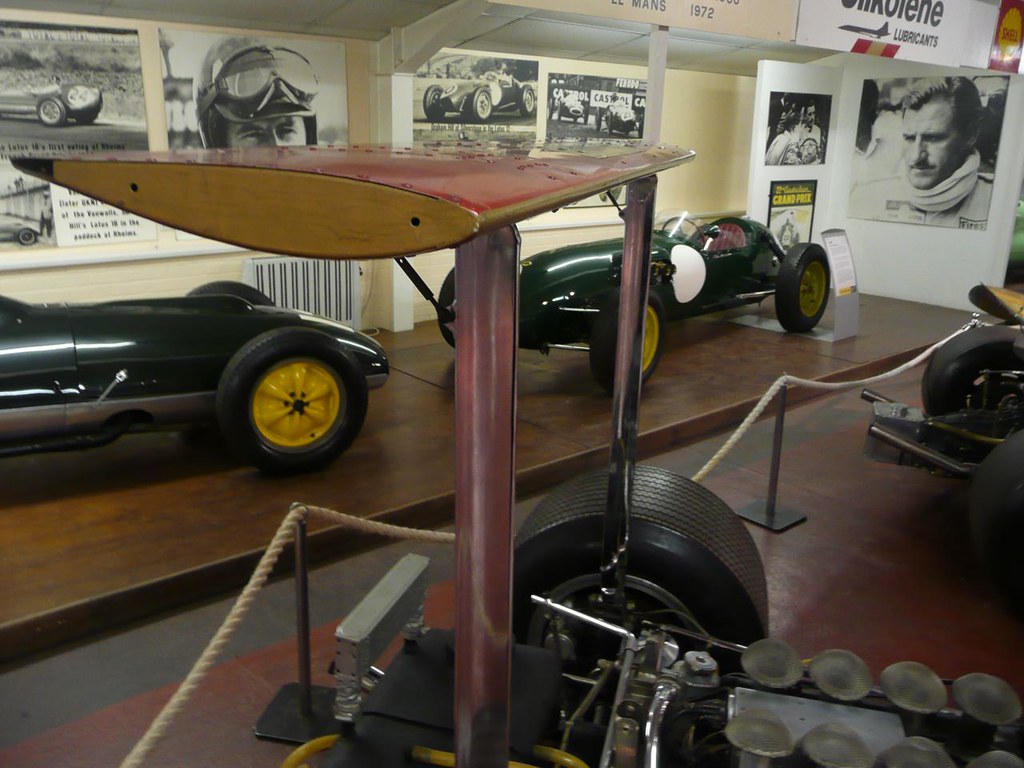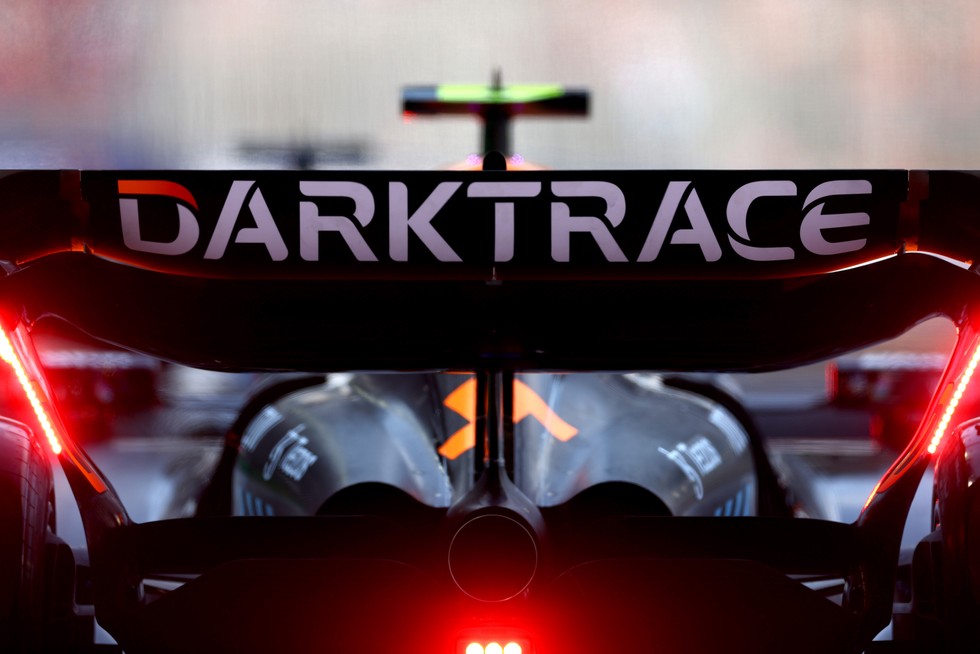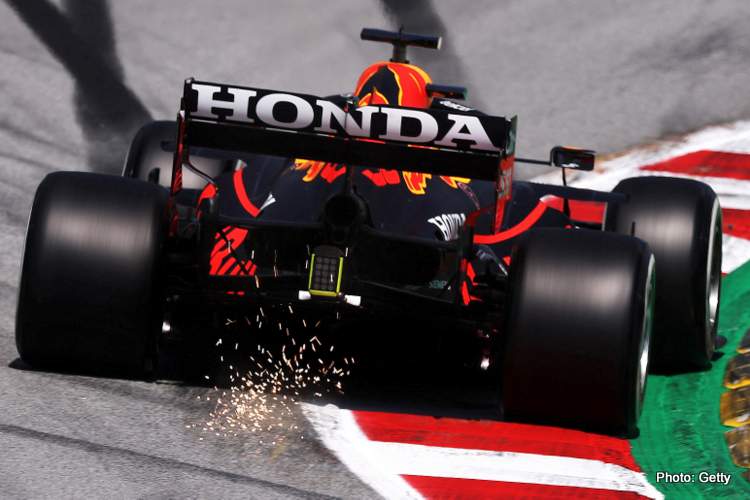Introduction to Formula 1 Aerodynamics
Aerodynamics plays a critical role in the performance of Formula 1 cars. The general philosophy behind F1 car design is to maximize downforce while minimizing drag. Downforce pushes the car into the track, allowing it to corner at higher speeds. Less drag also means higher top speeds on straights. The complex aerodynamic shapes of F1 cars create an airflow pattern that balances these two competing goals.
F1 teams invest heavily in aerodynamic development as small gains can make a big difference on track. Wind tunnels and computational fluid dynamics (CFD) simulations enable engineers to test adjustments and validate new designs. The governing FIA regulations also place restrictions to ensure safety and encourage technical innovation within set boundaries.
Overview of F1 Car Design
An open-wheeled single-seater race car, an F1 car must optimize multiple interconnected systems. The chassis incorporates the cockpit, suspension, crash structures, and aerodynamic bodywork. The powertrain includes the engine, transmission, drivetrain, and exhaust. Electronics and driver aids such as power steering and brake balance tuning tie these together.
All areas aim to be as light and compact as possible without compromising strength and rigidity. Cutting-edge materials like carbon fiber composites facilitate this goal. The minimum weight including the driver is 798 kg (1,758 lbs). The aerodynamics draw from every surface, guiding airflow in specific ways to benefit acceleration, braking, cornering, and stability.
Importance of Aerodynamics
The aerodynamics of an F1 car determine much of its on-track behavior. Properly shaped body parts counteract lift forces and generate suction-like downforce. This extra grip boosts cornering speeds substantially. Efficient designs also reduce turbulence in the car’s wake, cutting drag for higher straightline speeds.
With modern F1 cars capable of taking high-speed corners at 5-6 g’s and reaching over 200 mph (322 kph) on long straights, performance margins are razor thin. The difference between pole position and being a second per lap off the pace may come down to subtle aerodynamic tweaks. As regulations aim to create closer racing, understanding how to maximize every bit of aero performance is more vital than ever.
Anatomy of the F1 Rear Wing
As an F1 car slices through the air at high velocities, aerodynamic forces accumulate rapidly. The rear wing bears the brunt of managing this airflow to generate sufficient downforce with minimal drag. Its positioning at the back of the car also amplifies the rearward bias desired to promote oversteer under braking and acceleration.
Components and Structure
Modern F1 rear wings have become extremely refined. While basic in appearance, the shape, angles, and gaps between elements critically impact performance. These major components constitute a typical rear wing assembly:
- Mainplane – The largest rearward-angled component spanning the width of the car.
- Flaps – Smaller horizontal sections that angle downwards from the mainplane.
- Gurney flaps – Short upright tabs on the trailing edge of the flaps.
- Endplates – Vertical aerodynamic plates at the wing tips.
- DRS (Drag Reduction System) – Hydraulically-activated flap adjustment for reducing drag on straights.
Teams fine-tune the interplay between these parts toamplify downforce. Carefully engineered endplates contain the accelerated airflow over the wing elements. Gurney flaps generate targeted vortices to smooth unwanted turbulence behind the rear wing. The DRS offers adjustable performance for different situations.
Evolution of Rear Wing Designs
The origins of rear wings in Formula 1 date back to the late 1960s when Colin Chapman first mounted inverted airplane-style wings on his Lotus 49 cars. Early designs produced modest downforce due to their simple, single-element profiles.

Over decades of refinement, F1 rear wings gained more complex shapes and now incorporate multiple stacked elements. Sophisticated aerodynamic analysis guides boundary-pushing configurations within constantly evolving FIA regulations. The legal framework aims to curb costs and ensure driver safety while permitting sufficient freedom to drive rapid technical innovation in the quest for peak vehicle dynamics.
Modern rear wings now integrate with the surrounding bodywork rather than existing in isolation. The rear crash structure, body shape, diffuser ramps, and sculpted underbody guide airflow to complement wing performance. Engineers consider the cumulative flow field across these parts in unison thanks to powerful CFD simulations.
The Aerodynamic Role of the Rear Wing
The rear wing fulfills several key aerodynamic roles vital to an F1 car’s performance envelope:
Generating Downforce
As inverted airfoils, F1 rear wings deflect high-velocity airflow in a downward direction as it passes over them. This accelerates the air and, by Newton’s third law, creates an equal and opposite reaction – lift directed towards the track surface. Lift pushing down from above is called downforce.
The rear wing angles both the mainplane and flaps to amplify this effect. The inclined mainplane turns the airflow downwards. The angled flaps further build downward momentum for greater downforce compared to a single-element wing. Teams fine-tune the gaps and overlaps between these elements to maximize performance within regulatory constraints.
Balancing Drag and Lift
While downforce boosts cornering grip, drag hampers top-end speed. The ideal rear wing produces maximal downforce with minimal drag. To achieve this, F1 aerodynamicists use complex shapes and advanced materials to reshape and accelerate airflow smoothly. This delays the onset of turbulence-inducing separation.
The rear wing’s angle of attack finds an optimal middle ground between lift and drag. More extreme angles increase downforce but also introduce energy-sapping turbulence behind the wing. Careful structural engineering enables just enough compliance to relieve peak loads without compromising stability under downforce.
Interaction with Other Aerodynamic Elements
In isolation, the rear wing produces only a fraction of its eventual downforce. The surrounding bodywork shapes airflow to increase airflow volume reaching the wing. The expansive underbody accelerates this air upwards into the wing’s path.
Vortex generators on the rear crash structure energize the boundary layer of airflow over surfaces upstream of the wing. The rear body shape and sculpted channels under the car delay aerodynamic stall to keep airflow attached for longer. Component interactions amplify total downforce beyond the sum of their individual contributions.
The Impact of Rear Wing on Racing
As one of the few unrestricted aerodynamic components, the rear wing offers teams extensive tuning flexibility. Drivers depend on its tactical adjustments to push qualifying laps and manage tire wear during races. The DRS, in particular, facilitates exciting wheel-to-wheel battles by enabling dynamic speed boosts.
Rear Wing Adjustments and Race Strategy
F1 teams optimize rear wing settings individually for each track’s characteristics. Higher downforce balances faster cornering at circuits like Monaco. Lower drag trim aims for better straight line performance at power-centric tracks like Monza.
In changeable race conditions, tweaks take on added relevance. A “wet” high downforce setup sacrifices outright speed to gain stability in rain. Pit crews make rapid tweaks during pit stops to tune handling as fuel loads shed and tires degrade.

Drivers also manage movable aerodynamic elements like DRS and engine air intake vanes from the cockpit. Using DRS, adjustable front wings, and shifting brake balance at opportune moments can gain a decisive speed advantage.
The Role of DRS
The Drag Reduction System (DRS) alters rear wing angles at the push of a button. By opening a larger gap, it momentarily sheds drag to facilitate passing on designated straights. This temporary speed boost lets cars pull up to a second per lap closer to pursue overtake maneuvers.
Strategic DRS usage adds an extra dimension to racecraft. It encourages closer battles but generally prevents cars from using it defensively. Partial-DRS zones add nuance at some tracks to prevent it from becoming too powerful. F1’s next rules cycle brings further DRS restrictions to shift the focus back towards chassis performance.
Adjusting the Rear Wing for Different Tracks
F1 teams bring an arsenal of rear wing configurations to match each track’s distinct rhythm. Short, high-downforce designs suit tighter circuits like Monaco and Hungary. Low-drag wings better suit fast sweeps like Spa, Monza and Baku’s long straight.
Even at the same track, teams tailor the rear wing setup specifically for qualifying or race needs. The ideal single lap pace sacrifices some stability for lower drag at maximum attack. Race day setups hedge stability over peak speed to manage tire wear over multiple stints.
Rain introduces further setup permutations to retain drivability in low grip conditions. Extra downforce counteracts aquaplaning while keeping proportions tailored for wet tracks. As changeable conditions evolve, teams stand ready with additional wing options to adapt as needed.
Challenges and Innovations in Rear Wing Design
Ever-stricter F1 regulations aim to contain ballooning aerodynamic complexity and associated costs. Restricting wind tunnel testing hours and computational fluid dynamics simulations reins in runaway development. Defining standardized geometries, minimum weights, and maximum part quantities also helps.
Yet even within these rules, designers exercise their creativity to gain an edge through innovation. The quest unlocks manufacturing breakthroughs and steers research into advanced materials that eventually benefit road cars. Rear wing development continually pushes the boundaries of vehicle dynamics while respecting real-world constraints.

Regulatory Constraints and Technical Challenges
Regulations specifying maximum dimensions, airfoil thicknesses, and structural rigidity challenge engineers to extract maximum performance from set boundaries. Mandatory deformation under aero loading tests ensures flexibility does not exaggerate ground effects.
Durability requirements ensure survival in crashes up to 15 g’s of deceleration. Load tests confirming strength up to 1200 kg prevent excessive flex which would render wings illegal. Constraints promote driver safety while placing a premium on intelligent, efficient engineering.
Innovations within regulatory bounds include hollow, ultra-lightweight structures and materials like bubble-filled resin systems. Composite layups now incorporate nanocarbon tubes and fibers for strength and conducting heat away from trailing edges. CFd and wind tunnel testing refine shapes to reduce vortices and delay stall at critical wing sections.
Future Trends and Innovations
Ongoing mandates aim to promot closer racing by reducing aerodynamic sensitivity in another car’s wake. Simpler front and rear wings incoming for 2025 specifically target this goal. While heralding the end of certain intricate designs, new constraints will trigger another wave of clever optimizations.
Active aerodynamics could make a partial comeback thanks to exemptions for safety-critical devices. Drag reduction systems that only activate when following another car or when defended upon may emerge. Whether stationary or active, rear wings will continue to be a visible symbol of Formula 1’s relentless progress.


7 Comments